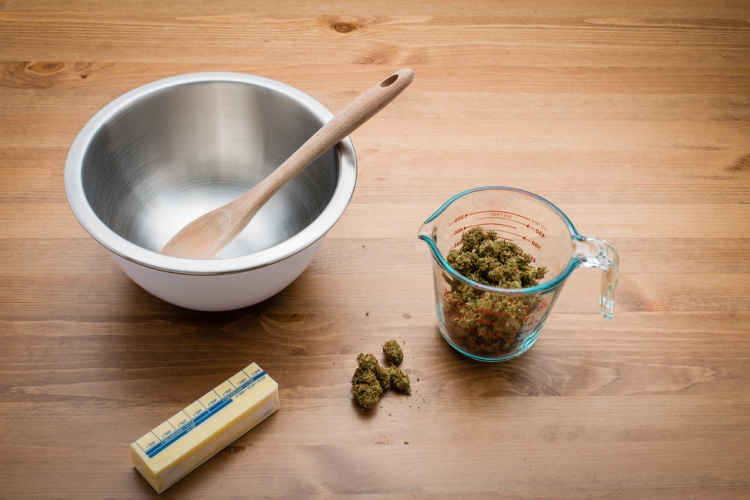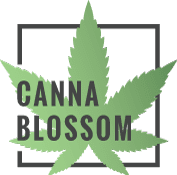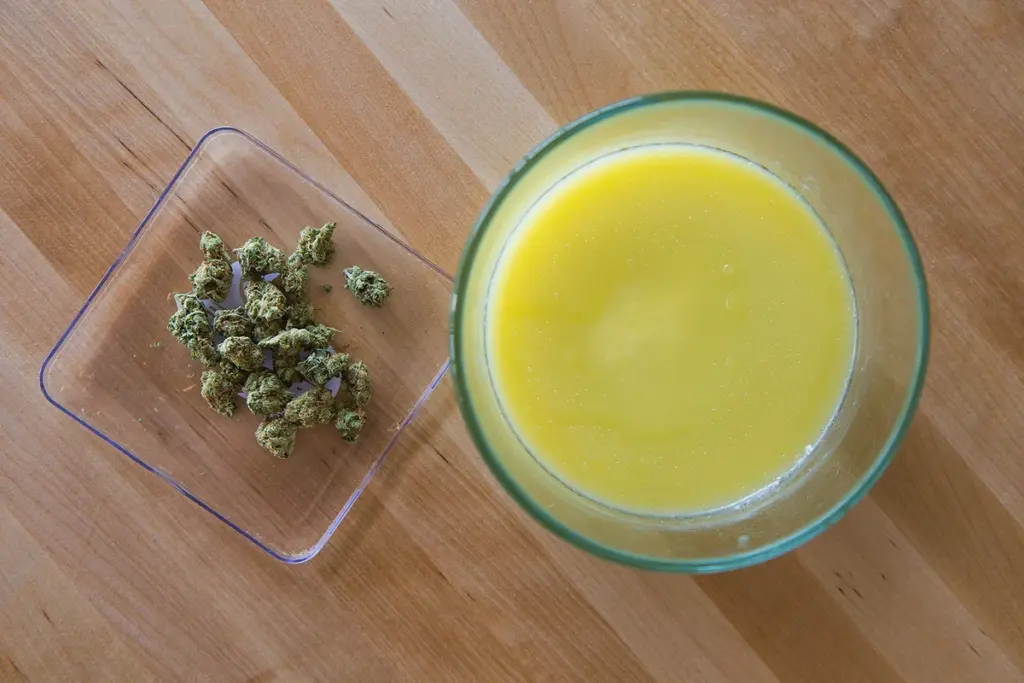Uncategorized
Making CannaButter – How Much Weed for 1 Stick of Butter?
Have you ever wondered how edibles make people high, despite being cooked? The secret lies in a simple yet intricate ingredient, namely butter. Ideally, butter used by home cooks or professionals in making edibles is different from the ordinary stick of butter-start with its name cannabutter. Simply put, cannabis butter is the primary ingredient at the core of making pretty strong edibles.
Particularly, this component is applicable in any cannabutter recipe such as cakes or cookies. However, you will rarely find ready-made cannabutter in your local stores, leaving you with the pertinent issue of how to make it. Even more-how much weed for 1 stick of butter? Apart from full-fat butter, you can also use substitutes such as ghee, olive oil or coconut oil for homemade edibles.
At the center of this question, it is primarily important to ensure that your mix attains the appropriate potency for the intended users. Especially with decarboxylation, this process can easily become complicated besides identifying the correct weed dosage.
Not to worry, you are in the right place where we will make this process less brain-steaming and still maximize potency in one stick of butter. In addition to identifying a good ratio for your edibles, we will go ahead and offer steps on how to make cannabutter out of just one stick and store it right. To start with, let’s dive into the factors that dictate how much cannabis you need per stick of unsalted butter.
Determinants of How Much Weed for 1 Stick of Butter
Prior to identifying the appropriate cannabutter ratio, here are a few aspects that will guide you in your quest for quality edibles:
- Weed potency
- Edible saturation
- Maximum saturation
1. Weed Potency
Primarily, cannabis butter works based on the potent levels of weed. Understanding the ability of your weed batch to make you high is the first factor that determines the quality of the cannabutter you obtain. Fortunately, if you buy your cannabis from a pharmacy or dispensary, you will be able to identify the different strength levels. On average, THC percentages vary as follows:
- Buds: 10%-20%
- Shakes: 5%-15%
- Plant stems: 5%-10%
- Already Been Vaped (ABV): 2%-7%
Even without the actual percentages, strength varies in the same order, meaning buds contain the highest percentages.
2. Edible Potency
Having identified the different percentages you can get for your cannabis, the next aspect to consider is how potent you want your consumables. This factor varies across different users, depending on different tolerance levels. Generally, here is a quick breakdown of edible concentrations for different categories of users:
- New weed users: Two and a half milligrams (2.5mg) THC
- Moderate weed users: 10mg THC
- Averagely heavy users: 40mg THC
- Heavy weed users: 100mg
3. Maximum Saturation
As you aim to get a good ratio for your cannabutter, there is only a certain saturation level of THC that sticks of butter or a pound of butter or coconut oil can handle. Luckily, sticks of butter come with a high saturation level that probably even heavy users might not require. Imagine this; you can use 11 grams of THC on one stick of butter, meaning you will need close to six ounces of 15% bud.
Ideally, one ounce of cannabis to one ounce of butter works for those seeking strong concentrations. However, when it comes to the legal concentration levels, 10 milligrams is adequate for consumables. In essence, 10 milligrams will give you a feeling of relaxation, euphoria, sedation and calm. Nonetheless, even with these legal levels, we recommend that new edible users start with THC concentrations below 5 milligrams.
In comparison, 10mg measures equivalently to an averagely sized smoking joint or 0.7 grams of cannabis bud. Considering that concentration goes hand in hand with user tolerance, you can taste your cannabutter before using it.

Cannabutter Ratio
This section holds the answer to how much weed for 1 stick of butter. For an averagely effective cannabutter recipe, you will probably use 6.4 grams of weed for one pound of butter, which is less than a quarter ounce of weed. In addition, one pound of butter can give you 48 brownies, and while using cups, 1/2 a cup (1 stick) of butter produces 12 brownies.
So in the context of 48 brownies or one pound of butter, you can comfortably use 15% THC bud for a potent extract. As such, you will require approximately need 1.6 grams of 15 THC weed for each butter stick-which is below a half-ounce of weed. Therefore, for about two batches or more, you can use the same dose for every one pound of butter.
However, this ratio is debatable across different edible cooks and users. For instance, heavy users can prefer to use more in their consumables, while new users should use less than 5mg. So, while still at this ratio, let’s proceed and identify the ratio of cannabutter per edible.
Edible to Cannabutter Ratio
The amount of weed you apply for each butter stick will impact the concentration of corresponding individual cannabis consumables. Subsequently, the edible to cannabutter ratio depends on how much weed butter you apply for each edible.
Therefore, you will know your edibles are pretty strong or mildly potent based on the concentration of the initial cannabutter. Again, the concentration of each edible will depend on your tolerance level and the concentration of THC that gets you high.
How to Make Cannabutter
As we promised earlier, we’ll leave it where you can easily make cannabutter. Subsequently, we will cover the process of making weed butter in this section. To start with, here are some of the items you will require for this process:
- 7 grams of cannabis flower (a quarter ounce)
- 2 sticks (1 cup or 8 ounces) of unsalted butter or coconut oil
- Weighing scale
- 1 cup of water
- Weed grinder
- Non-stick baking sheet
- Parchment paper
- Saucepan/ stovetop pot
- A thermometer
- Cheesecloth
- A clean bowl or glass jar
- Spatula and utensils
- Metal strainer
Step 1: Decarb the Cannabis
You first need to decarboxylate your marijuana. This process involves heating marijuana in an oven to convert the THC-A component into the psychoactive CBD and THC in your weed product. In other words, decarboxylation helps activate the useful weed compounds. Simply put, decarboxylation involves heating of ground cannabis flower, just like when you smoke or vape weed.
How to Decarboxylate Weed
- First, grind the cannabis flower using a weed grinder to obtain ground herb.
- As you proceed with these preparations, preheat the oven to 2400F.
- Use a non-stick baking sheet to spread the ground cannabis. To maintain its purity while decarboxylation, place parchment paper at the bottom before spreading your ground weed. Both the non-stick tray and parchment paper help prevent the cannabis from sticking.
- In the process of spreading, you can use this opportunity to break any large buds with your fingers.
- After the ground product is evenly spread, you can proceed and place the tray in the preheated oven.
- Bake your cannabis for about 30-45 minutes and ensure you stir after every five minutes for even decarboxylation. Well-baked and decarboxylated weed should have an impression of light brown. Nevertheless, you should avoid overbaking your weed to avoid breaking down terpenes and cannabinoids.
Notably, decarboxylation at low temperatures helps preserve most of the terpenes that influence the flavor of your cannabis. This first step is necessary for high-tolerant weed consumers to ensure they maximize the benefits of THC. However, a new cannabis consumer can skip this step or still decarb and ensure they observe the mixing ratio with minimal concentration.
Also, THC-A can turn into THC through the slow butter melting process. However, this alternative way will eliminate a lot of beneficial cannabinoids.
Step 2: Steep on the Saucepan/Stovetop
It is at this stage that you ready your butter for the cannabis infusion process.
- Start with melting 1 cup (2 sticks) of butter into water. The purpose of the water is to ensure even butter heating.
- While heating your stovetop pot, ensure you use the lowest heat setting. Ideally, the best temperature range for melting your butter is 150-200 degrees Fahrenheit. At this point, the cooking thermometer will come in handy for accurate temperature measurement.
- After melting your butter, you can add your dercarbed cannabis. Then mix and cover the saucepan or pot. Covering ensures that heat is distributed evenly for slow extraction.
- Let the mixture simmer for about three hours at 150 degrees Fahrenheit. You can let the mixture steep for an extra hour (total four hours) for better effectiveness. Add water when necessary to avoid exposing your butter to overheating. After the cooking time is over, you will have your cannabis-infused butter.
- At this point, you already know how much weed for 1 stick of butter you need (around 1/8 ounce of cannabis for just one stick). Therefore, for about two batches, you will use double portions.
Alternative Steeping Recipes/Methods
Alternatively, you can use the crockpot and double boiler recipes to steep your marijuana butter mixture. These alternative methods also help stabilize and balance the butter temperatures to avoid overcooking. For example, while using the double boiler recipe, you can simmer two sticks of butter and cannabis in a glass bowl for about three hours. On the other hand, while using the crockpot recipe, you add water, cannabis and butter into the same pot and leave the mixture for around three hours at 150 degrees Fahrenheit.
Step 3: Strain your Butter
Once your mixture is ready, you can then strain the mixture into a clean bowl. This step is very critical to making the entire recipe a success.
- First, place several layers of cheesecloth over the opening of your receiving jar and hold them in place using rubber bands. Alternatively, you can use coffee filters. However, an average metal strainer might be too rough for this stage.
- Then pour your butter mixture through the attached cheesecloth. Be careful not to overflow your cheesecloth. After a complete strain, you can proceed and dispose of spent cannabis.
- After pouring all your mixture, let your sifted mixture cool at room temperature for about 30 minutes.
- Once your custom butter is solid, you can remove the remaining water carefully using clean fingers or an appropriate utensil.
Note: Always avoid squeezing the cannabutter mixture as it strains. Notably, squeezing the cannabutter mixture releases tannins and other more bitter flavors that are undesirable in cannabutter.
Tips for Obtaining the Right Potency
Cooking cannabutter may sound simple, but it’s at the heart of obtaining potent food. Here are a few tricks for maximizing the potency of your subsequent food:
- Match your ingredient measurements to your intentions. For instance, two and a half milligrams of THC might be excessive for some individuals, while 100 milligrams might not be enough for some.
- Use quality butter. You can use either salted or unsalted butter as long as it’s of good quality. Virtually any oil that contains fat can be used as an alternative to butter. However, avoid fat-free butter or margarine since they may not bind with cannabis, rendering it ineffective.
- Shop for quality cannabis. This aspect reinforces your confidence in the percentage of the listed CBD, THC and other cannabinoids. Additionally, getting quality cannabis depends on legal shopping for quality concentration levels. As such, strains sold legally contain 25-35% THCA, unlike the low CBD and THC levels in illegally sold cannabis. Therefore, quality cannabis will maximize potency through more psychoactive THC.
- Match your tolerance to a flower’s concentration. Depending on the flower you obtain, you will get different THC and CBD levels.
- Apply the stoner math. Here’s the formula: (grams of flower) x 1000 x (percentage of THC) = total milligrams. Therefore, if you have 7 grams of cannabis flower carrying 20% THC levels, you will obtain 1400 milligrams of THC in your cannabutter. This formula helps estimate the maximum amount of THC you will have for your cannabutter.
- Always grind your cannabis flower first. This trick helps to adequately decarb your cannabis instead of grinding after decarbing, to avoid damage to your grinder.
Therefore, whether you are a new or an intrepid cannabis cook, knowing the answer to how much weed for 1 stick of butter helps in making quality cannabutter. Notably, an appropriate dose of cannabis for one batch or more will ensure your cannabis food is potent enough to your preference. Ultimately, whether you use 7 grams of cannabis or less, you can customize your cannabutter to your needs.
How to Store Cannabutter
Once your finished product has cooled at room temperature and is ready to eat or cook with, you can store it in the refrigerator or freezer. While in the fridge, it can last up to two months and six months when in a freezer. Also, you should store your final product in an air-tight container such as a sealed mason jar.
Additionally, your stored cannabutter should ot be exposed to light. Light is known to degrade cannabis compounds. Finally, before using older cannabutter, ensure you smell it, and if it smells rancid, it’s not ideal for consumption.
Final Verdict
Whether you are creating cannabutter to eat or cook with, you must observe caution while making it. Overall, we have established that the amount of cannabis added to a single stick of butter may vary across different users depending on their intentions and tolerance. However, new users have a limit to avoid getting overwhelmingly stoned. Therefore, observe the cup proportions recommended in this guide depending on the amount of cannabutter you aim to obtain.

